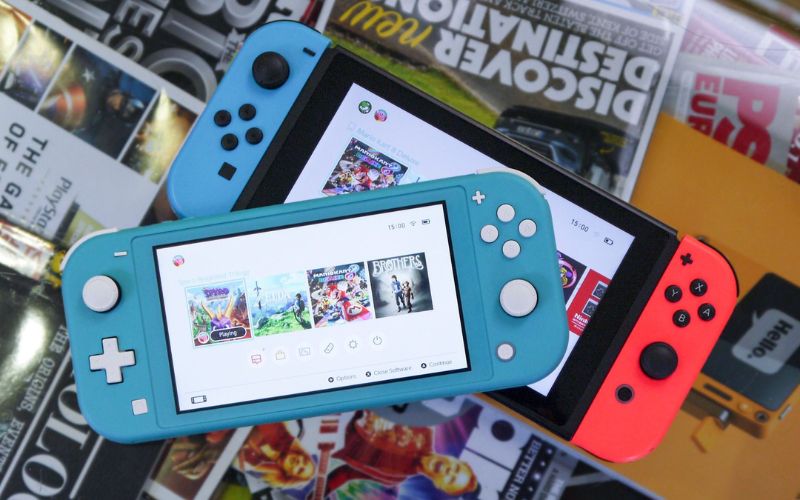Nintendo Switch Indie Game Store, From Gem Haven to Junkyard?

When the Nintendo Switch first came out in 2017, people loved it a lot. It was small, easy to carry, and had strong games. Big titles like Zelda: Breath of the Wild and Mario Odyssey made the console famous, but what made it special for many people was the support it gave to small developers, called indie developers.
Indie games are made by small teams, sometimes even one person. These games are not very fancy like AAA titles but are full of heart and creativity. On Switch, these games got a new home. Many games like Stardew Valley, Celeste, Hollow Knight, and Dead Cells became big hits on the Switch. These games were cheap, fun, and fresh. The Switch gave them a place where people could play on the go or at home.
Nintendo also supported these developers. There were regular indie showcases and big promotions for new releases. Players felt excited every week to check out what new game was out. For a few years, the Switch was known as the best place to play indie games. It was like a fresh market full of tasty new snacks.
Also Read:
The Problem Started: Too Many Games, No Control
After some years, the number of indie games on the Switch kept growing. But not all were good. Many developers started uploading half-finished or copy-paste-type games just to make money. Nintendo’s eShop started to fill with low-quality games that didn’t work well, looked bad, or were just plain boring. Some games were rushed in a few days, with no effort or testing.
Because there was no strong check or rule from Nintendo, anyone could add their game to the store. Slowly, many bad games started covering the good ones. If you opened the store, you would see 20–30 new games every week, but most of them were not worth your money or time.
Even good games got lost in this flood. Players could not find them easily. Reviews were few, and there was no easy way to filter games. The search system on eShop was also poor. So, instead of a sweet indie market, it started to feel like a garbage pile where good items were hard to find.
Tricks by Developers: Fake Discounts and Spam Games

Another big problem was fake marketing tricks. Some developers started using wrong methods to grab attention. They would make a very low-quality game and price it at $20. Then, they’d give a “90% off” sale and sell it at $1. People would think they were getting a big deal and buy it.
But the game would be useless, sometimes not even working. Still, it would go on top of the “Best Sellers” list because it sold in big numbers. This trick made it look like a popular game, but it was just spam. Real indie developers, who worked hard on good games, got pushed down the list. They got fewer views, fewer clicks, and fewer sales.
Also Read:
Some studios even released many small games every month—same idea, different name. These were used to keep their name on top of new release pages. This kind of spam made it even harder for players to trust or find the real gems hidden under all this junk.
What Nintendo Should Do Now: Fix the Shop and Respect Real Creators
Nintendo made a great place for indie games at first. But now, they need to clean their house. The eShop needs big changes. First, there should be a better way to find games—like filters for rating, reviews, and verified creators. Players should be able to block spam developers or report fake discount tricks.
Second, there must be a stronger quality check. Not all games need to be big-budget titles, but they should at least work and be made with effort. There should be a test to make sure the game runs without bugs, doesn’t crash, and has basic gameplay.
Third, Nintendo can bring back the old Indie Highlights and help promote good games made by small teams. A badge or label for “trusted indie” or “handpicked by Nintendo” can also help players choose better.
And lastly, they should stop showing fake best-seller games. A new system that includes player reviews and time played can help decide which games are truly good.
Also Read:
The Nintendo Switch was once a beautiful garden for indie games. Small developers got the attention they deserved, and players found joy in simple, creative games. But now, that garden has become a dumping ground full of trash and tricks.
If Nintendo listens and takes action, the Switch can again become the top choice for indie lovers. But if they keep ignoring the mess, more good developers will leave, and players will stop trusting the eShop.
It’s not too late to fix it. The Switch is still popular, and indie games still matter. Nintendo just needs to clean up the mess and protect the heart of what made the Switch special in the first place: real creativity, not cheap cash grabs.

![When Does The MSI Claw Come Out- Is It Coming This Month? [2024] When Does The MSI Claw Come Out](https://mediatalky.com/wp-content/uploads/2024/05/When-Does-The-MSI-Claw-Come-Out.jpg)



![Gorilla Mind Reviews Is This Safe In Your Workout Days? [2024] Gorilla Mind Reviews](https://mediatalky.com/wp-content/uploads/2024/02/Gorilla-Mind-Reviews-Is-This-Safe-In-Your-Workout-Days-1-768x488.jpg)
